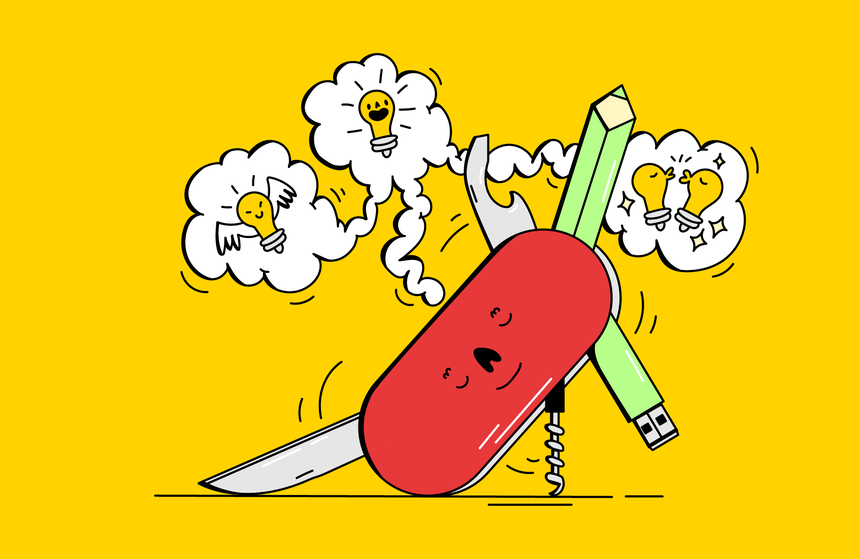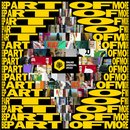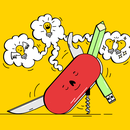Become a Creative
Working creatives share their tips on how to land a job as a professional ideas person

In the purest sense of the word, a “creative” is an ideas person who uses their imagination to produce an original piece of work. In the context of advertising, this could be a TV or radio ad, a billboard, a print ad in a magazine, a social media campaign, a digital activation – the list goes on. If advertising is a business of ideas, the creative team are the people who come up with them. Clients will usually have something specific they want the world to know – perhaps they launched a new product or rebranded their message. It’s the creative team’s job to then find the most unique and memorable way of getting this out to the public. A creative team typically comprises art directors and writers, or multi-disciplinary people who can do it all. To be a creative, you’ll need to be brimming with crisp ideas, have a great sense of design and be able to think critically, amongst other things. So how do you get started learning these skills? We spoke to five people who have established themselves as creatives to give us some tips.
Write and Crack Your Own Briefs
When you’re just starting out, it’s likely you won’t be given the biggest campaigns to work on. This is the perfect time to write and crack your own briefs. James Sellick, Creative at Mother says that when he started he did what he had to do to make his bread and butter, “but in my free time, I thought about fun and famous things Mother could do to make the world a better place. Most agencies have a budget for their own agency-brand projects, and those ideas, when they’re good, go straight to the top. They’re the projects that get you noticed by the right people.”
Similarly, Raminder Samra, Creative at Adam&EveDDB says, “The best piece of advice I got was to make your own opportunities to get work made and show it to people whose work you admire. For example, is there a specific day that everyone celebrates? This could be a great opportunity to make your own work.”
Ellen Turnill Montoya, Creative Director at Anyways Creative also has similar advice. She says, “If you are in a place where there is a type of work you would love to do and you aren’t getting booked to do it, try to find an opportunity to do it yourself. Then you can showcase that within your portfolio, as it is true that your output will naturally attract more of the same type of work.” So pick something you’re interested in, write and crack the brief, and show your work to the right people.
Develop an Eye for Good Design
When delivering a creative project, the visual element and words go hand in hand. Every creative, no matter how streamlined a particular role may be, will need a good eye for design. This will be especially important as you climb the ranks, as the best creative directors always have a unique vision for a project, and know exactly who to hire to make that vision a reality.
Luis Gatti, Senior Art Director/Creative at BBDO Berlin says, “Never force a graphic style just because you think it is beautiful or trendy. Study photography, illustration, film, animation, design and anything that can give life to your idea. You don't necessarily need to know how to do it, but it is your responsibility to find the right person for it.” He recommends bookmarking sites that can provide visual inspiration, as well as checking art publications from different parts of the world in order to stay informed and develop an eye for what looks good.
Learn How to Spark an Idea
As a creative, one of your main jobs will be to think critically and generate fresh ideas. Sellick says, “A friend at a party, who worked at Saatchi (& Saatchi) at the time, told me about this group of people at his agency that just sat around thinking thoughts. I didn’t think that could possibly be a real job. Turned out it was.”
Thinking of fresh ways to tell a brand’s story is not an easy task, and to do it well you’ll need to train your brain to spark ideas. One way of doing this is to just engage more with the world around you. Paddy Paddison, Creative at TBWA/LDN says, “Absorb everything. Or as much as you can from what you watch, see, listen to, read, even if it's not something you're into. You never know if it might appear from the back of your brain to inspire an idea when you're trying to crack a brief.”
Broaden Your Creative Horizons
Creatives don’t always need to be specialists. If you feel you’re more multidisciplinary, Turnill Montoya has some good advice saying, “Something I struggled with a lot in my career was the pressure to hone down what I do to something more focused, but the creative world has both space for specialist designers, and multidisciplinary ones too, and I feel that magic happens when we come together. If you feel you are more of a multidisciplinary creative, I would encourage you to embrace it and use it as an opportunity to try new things—there are huge benefits and opportunities in using your expertise, skills and passions in new ways”
She worked as a graphic designer at a branding studio and also did a lot of projects on the side to feed her multidisciplinary working style. She worked on illustration commissions, created interactive installations with friends, and created and hosted an experiential supper club at an arts festival. “I worked on these side projects alongside my full time job. It helped me apply my design skills and thinking in different ways, as well as giving me experience in bringing creative projects to life from a production perspective. This accidental pairing of work experience, which came about due to my personal passions, meant I was in a great place for the multidisciplinary creative role at Anyways when it came along.”
Get Some Training
If you’re really new to the profession, it might be helpful to get some professional training. It doesn’t matter if you’ve already studied something else but know that you really want to switch paths. Sellick already had a degree in Economics when he realised he had another calling, and says, “I did the Falmouth Advertising MA as I knew absolutely nothing about advertising.” Afterwards he was offered a placement at a small digital agency which led to a full time job.
Similarly, Samra was a student at The Watford Course in creative advertising before being offered a placement at 4Creative, where she worked freelance for a few years. Find a professional course that suits your budget and just get started.
Take Care of Your Mental Health
Advertising is notorious for being a particularly demanding profession—you may spend days on a brief and think you’ve come up with an extraordinary campaign idea which a client could veto and you’ll have to start over. That’s why we love this bonus tip from our friends in the industry. Says Paddison, “Never put work over your mental health. Your brain is your main tool, look after it.”
Get more advice and tips from professional creatives and learn how you can land the creative job of your dreams.
Sign up now



